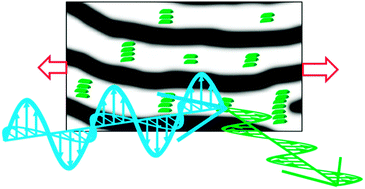For those of us working with liquid crystals, the answer tends to be fairly automatic: "the average of the second Legendre polynomial over the orientation distribution". Only in a second step do we think to qualify the definition: it concerns the quadrupolar order parameter (call it S) in a three-dimensional system. S = 0 for isotropic orientation, S = 1 when the molecules are perfectly oriented along an axis (the director) and S = –1/2 when they are all perpendicular to the director.
Whether it is the appropriate one depends on the problem at hand: if the particles constituting the system do not have inversion symmetry we should probably use the dipolar order parameter. It is less obvious that, although S describes well the tendency of molecules to align along an axis or perpendicular to it, it is not appropriate for any preferred angle: if all molecules make the "magic angle" θm = arccos(1/√3) ≅ 54.7° with the director, S is again zero so it cannot help distinguish between this situation and a purely isotropic distribution. One should then resort to the octupolar order parameter (or possibly a combination of quadrupolar and octupolar terms, for other angles?)
It may be useful to look at order parameters pragmatically, as Landau did for his theory of phase transitions: they are constructed such as to be zero in one phase and finite in another one. It is up to us to identify the phases and to define the most convenient parameter with regard for the particular system but also for the information we want to extract.
It may be useful to look at order parameters pragmatically, as Landau did for his theory of phase transitions: they are constructed such as to be zero in one phase and finite in another one. It is up to us to identify the phases and to define the most convenient parameter with regard for the particular system but also for the information we want to extract.











